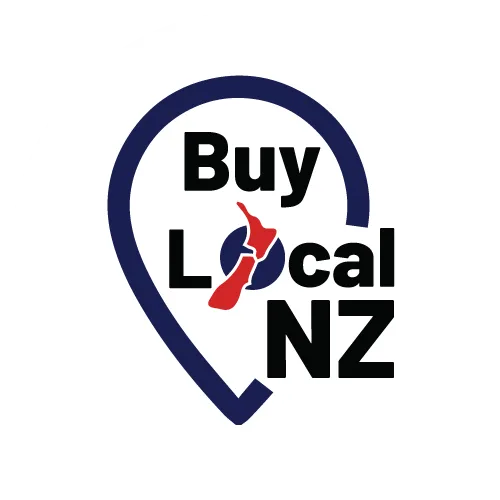
Voice Search SEO: Your Neighborhood Business Guide
Voice Search SEO: Your Neighborhood Business Guide
To optimize your local business for voice search, you'll need to focus on natural language patterns and conversational content that matches how people actually speak. Start by claiming and optimizing your Google Business Profile with accurate NAP details, then structure your website content around common voice queries using long-tail keywords and FAQ sections. Don't forget mobile optimization and schema markup - these technical elements are essential. The complete roadmap to voice search success awaits below.
Key Points
- Optimize your Google Business Profile with accurate NAP details and up-to-date service information for local voice searches.
- Create conversational content using natural language patterns that match how people verbally ask questions about local businesses.
- Structure website content around FAQ formats with long-tail keywords that address common neighborhood-specific queries.
- Implement local business schema markup to enhance visibility for voice assistants and mobile searches.
- Monitor voice search performance through featured snippet tracking and Google Business Profile insights.
Understanding Voice Search Behavior in Local Markets
To tap into this shift, you'll need to understand how your local community speaks naturally about your business category.
Listen to their questions, track their common phrases, and embrace the way they describe locations and services.
Break away from rigid keyword structures and align your content with their authentic voice search patterns.
Essential Voice Search Optimization Strategies for Local Businesses
When optimizing your local business for voice search, focusing on key strategies can greatly boost your visibility and reach.
Start by claiming and optimizing your Google Business Profile with accurate NAP (name, address, phone) details. Create content that answers common local queries using natural, conversational language.
Optimizing your Google Business Profile and creating conversational content are essential first steps for local voice search success.
Structure your website's FAQ section around long-tail keywords that match how people actually speak. Include location-specific terms and phrases like "near me" or "in [city name]."
Don't forget to optimize your mobile site speed and guarantee your content is mobile-responsive, as most voice searches happen on smartphones.
Crafting Conversational Content for Voice Queries
You'll need to adapt your content to match how people naturally ask questions with their voice, using complete phrases like "how do I fix my dishwasher" rather than typed keywords.
Your writing should mirror casual, spoken conversation since voice searchers tend to use informal language and complete sentences.
Consider incorporating contractions and conversational phrases that you'd typically use when speaking to make your content more voice-search friendly.
Natural Question Patterns
Understanding natural question patterns is essential for voice search optimization since people phrase their voice queries differently than typed searches.
When speaking naturally, users tend to form complete questions rather than fragmented keywords. Think about how you'd ask for directions or recommendations in everyday conversation.
- "Where's the closest coffee shop that's open right now?"
- "What's the best Italian restaurant near me with outdoor seating?"
- "How late is the pharmacy open on weekends?"
- "Who can fix my car's transmission today?"
Casual Speaking Style
Natural question patterns set the stage for how we need to adapt our content's tone and style. To connect with voice search users, you'll want to write like you speak. Think about how you'd explain something to a friend over coffee.
| Traditional Text | Voice-Friendly | Why It Works |
|---|---|---|
| Purchase Options | Ways to Buy | More Natural |
| Contact Information | How to Reach Us | Conversational |
| Location Details | Where to Find Us | User-Friendly |
| Operating Hours | When We're Open | Straightforward |
| Product Features | What It Does | Simple & Clear |
Break free from rigid corporate speak. Your content should flow naturally, using contractions and everyday language that matches how people actually talk.
Optimizing Google My Business for Voice Discovery
To optimize your Google My Business profile for voice search, you'll need to start with verifying every detail of your business information for complete accuracy across all fields.
You'll want to incorporate relevant local keywords naturally throughout your business listing, especially in your business description and service categories.
Make sure you've included thorough details about all your services, hours, and amenities, as voice assistants rely heavily on this information to match user queries.
Verify Business Data Accuracy
Accurate business data stands as a cornerstone for voice search optimization in your Google My Business listing.
When people ask their voice assistants about local businesses, they're counting on precise information to make quick decisions. Don't let outdated details hold you back from connecting with potential customers.
- Double-check your business hours, including holiday schedules and special operations.
- Verify your exact street address matches across all platforms.
- Update your phone number and test it regularly to guarantee it's working.
- Confirm your business category and services reflect your current offerings.
Local Keywords for Listings
While optimizing your Google My Business listing requires attention to detail, incorporating local keywords plays an essential role in voice search discovery.
Break free from generic descriptions by adding neighborhood names, local landmarks, and district-specific terms that your customers actually use in conversation.
Include natural phrases like "near downtown," "by the riverfront," or "in the arts district." Don't forget to mention nearby cities and popular intersections.
Update your business categories with location-specific services, and weave these local terms into your business description, posts, and responses to customer reviews.
Add Complete Service Details
Since voice searchers often ask detailed questions about specific services, your Google My Business listing should thoroughly describe everything you offer.
Take control of how potential customers discover your business by providing extensive details that match their natural spoken queries.
- Break down your core services into specific offerings (e.g., "deep tissue massage" rather than just "massage")
- List price ranges and service duration when applicable
- Highlight specialized equipment, techniques, or certifications you use
- Include relevant service area information and any unique features that set you apart
Your detailed service descriptions empower customers to find exactly what they're looking for through voice search.
Mobile-First Voice Search Techniques
Because mobile devices now dominate voice search usage, optimizing for mobile-first voice search has become essential for SEO success.
Break free from desktop-only thinking and embrace responsive design that adapts seamlessly across all devices. Guarantee your site loads lightning-fast on mobile networks.
Structure your content around natural language questions that people actually ask. Focus on featured snippet opportunities by providing direct, concise answers.
Don't forget to optimize your Google Business Profile with accurate NAP (name, address, phone) data to capture "near me" voice searches.
These mobile-first strategies will release your voice search potential.
Local Keywords and Natural Language Patterns
As voice search continues reshaping local SEO, you'll need to target both traditional geographic keywords and conversational language patterns.
Break free from rigid keyword structures and embrace how people naturally speak when searching for local businesses.
- Replace "best pizza NYC" with "where's the best pizza near me that's still open"
- Transform "dentist Chicago" into "find me a dentist who takes my insurance within walking distance"
- Switch "hair salon downtown" to "book me a haircut appointment this afternoon nearby"
- Update "gym membership rates" to "how much does it cost to join the gym on Main Street"
Building Voice-Ready Rich Snippets and Schema Markup
Rich snippets and schema markup serve as the technical backbone for voice search optimization.
You'll need to implement structured data that directly answers common voice queries about your business. Start by marking up your NAP (Name, Address, Phone) details, business hours, and services using Schema.org vocabulary.
Focus on local business schema types that highlight your physical location and service area. Add FAQ markup to address common customer questions.
Transform your website's raw data into voice-ready formats that digital assistants can easily understand and relay to users.
Include review markup to boost credibility when voice searchers ask about your reputation.
Voice Search Analytics and Performance Tracking
While tracking voice search performance poses unique challenges compared to traditional SEO metrics, you'll need specialized analytics to measure your voice optimization efforts.
Break free from traditional analytics limitations by focusing on voice-specific data points that reveal how users interact with your content through spoken queries.
- Monitor featured snippet performance, as these often become voice search answers
- Track question-based queries and long-tail keywords in your Search Console
- Analyze mobile vs. desktop traffic ratios to gauge voice search impact
- Measure "near me" and local search performance through Google My Business insights
Voice Assistant Platform-Specific Optimization Tips
Since each voice assistant platform processes queries differently, you'll need tailored optimization strategies for Alexa, Google Assistant, and Siri.
For Alexa, focus on featured snippets and integrate Schema markup extensively. Break free from traditional keyword structures by optimizing for "Alexa Skills" and conversational phrases.
Target Google Assistant by prioritizing mobile-first indexing and local business listings. Claim and optimize your Google Business Profile to boost visibility.
With Siri, emphasize Apple Maps optimization and natural language patterns. Structure your content around questions and commands that align with Siri's preference for action-oriented queries like "find," "show," or "where is."
FAQs
How Much Does Professional Voice Search Optimization Typically Cost for Small Businesses?
You'll typically spend $500-2,000 monthly for professional voice search optimization services, though costs vary based on your business size, market competition, and whether you're bundling with traditional SEO.
Which Voice Assistant Platform Drives the Most Local Business Searches?
You'll find Google Assistant leads local business searches, driving 46% of voice queries, while Siri follows at 31% and Alexa at 17%. Take advantage of Google's dominance for maximum reach.
Can Voice Search Optimization Negatively Affect Traditional SEO Rankings?
Your voice search optimization won't harm traditional SEO rankings. Actually, it'll strengthen your overall strategy since both methods rely on natural language, featured snippets, and mobile-friendly content.
How Long Does It Take to See Results From Voice Search Optimization?
You'll typically see initial voice search optimization results within 3-6 months, but don't get discouraged - keep refining your natural language content and local presence for stronger outcomes.
What Percentage of Voice Searches Convert to Actual Store Visits?
Ever wondered about voice search success? You'll find that 28% of voice search users visit stores within 24 hours of their search, but you can boost those numbers through targeted local optimization.
In Summary
By optimizing your local business for voice search, you'll be positioning yourself to capture a growing market - 58% of consumers now use voice search to find local business information. Make sure you're implementing these voice search strategies consistently and monitoring your performance metrics. When you craft your content around natural language patterns and maintain accurate business data, you'll improve your chances of being the answer users hear.

